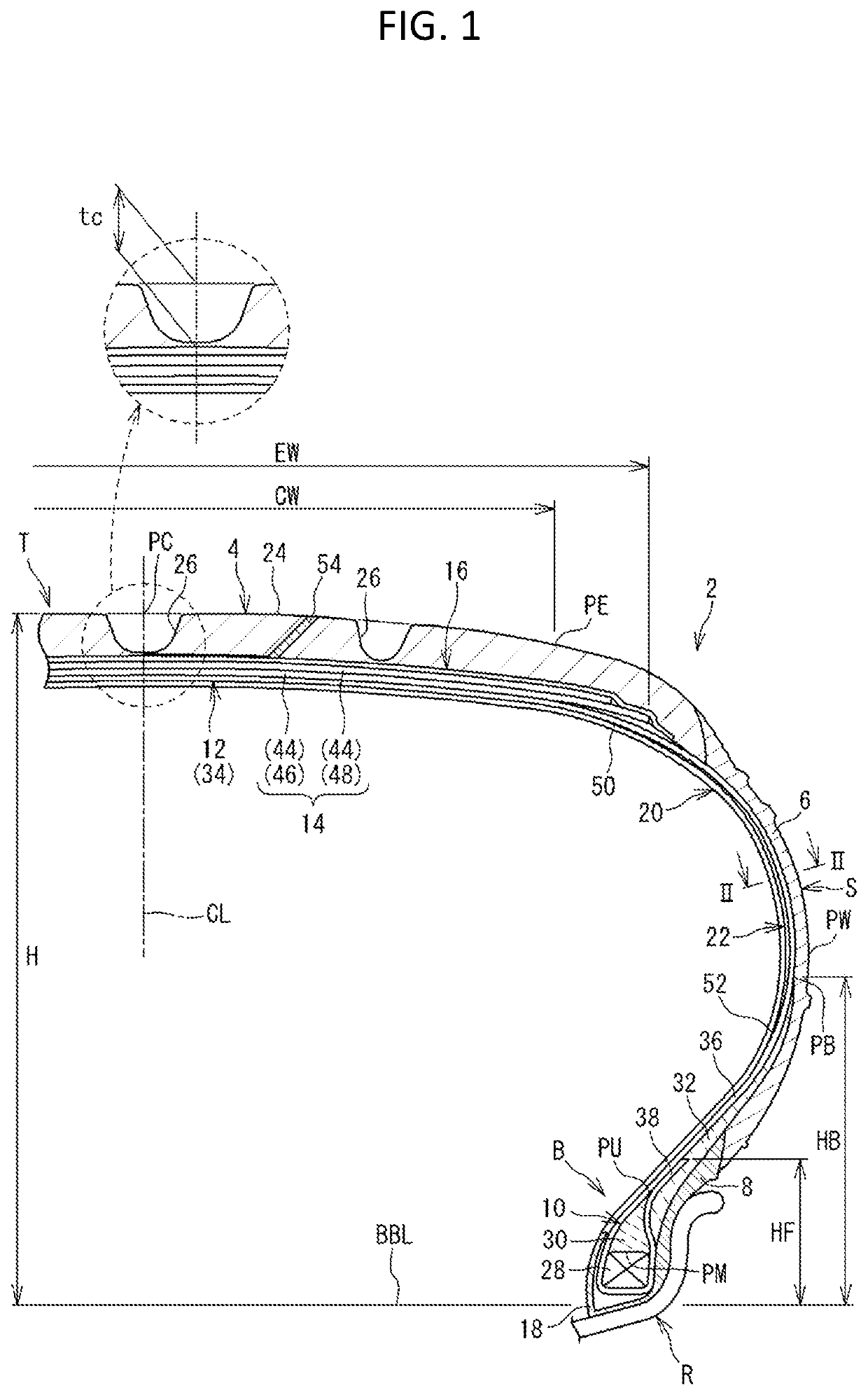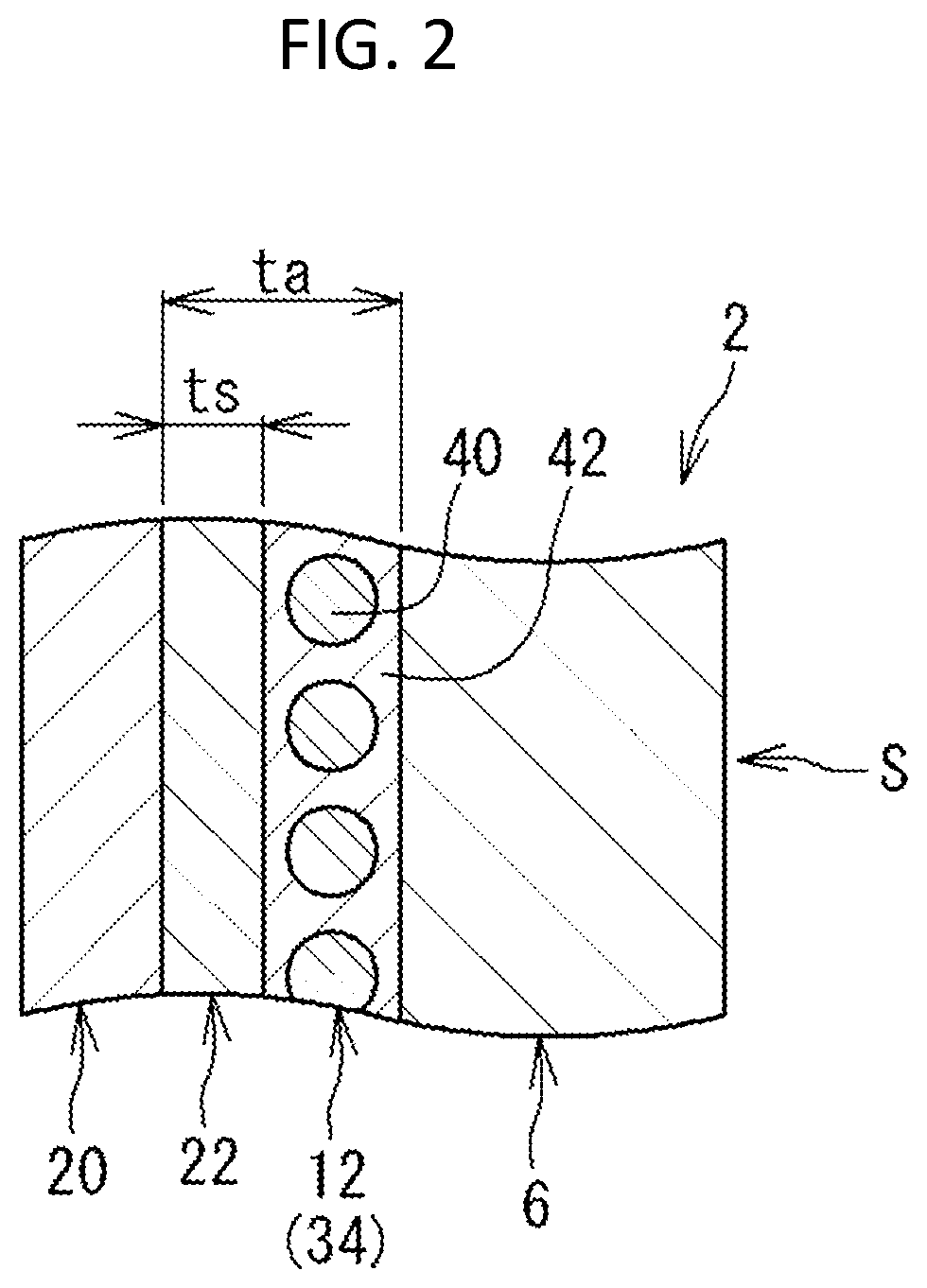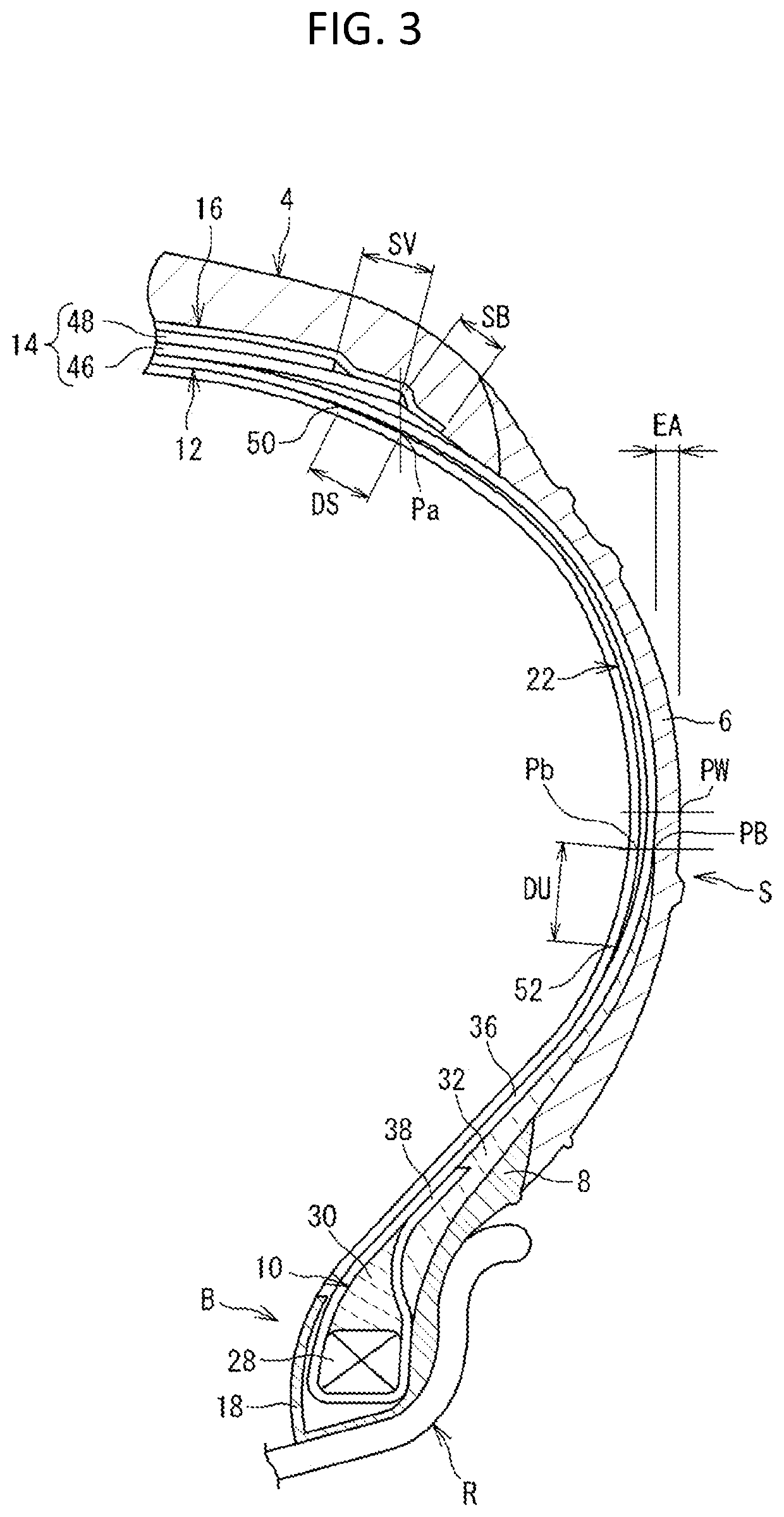Tire
a technology of tires and tyres, applied in the field of tires, can solve the problems of degrading steering stability, carcass may not function as a conductive path, and the thickness required for the top rubber may not be guaranteed, so as to reduce the influence of electric conductivity, reduce rolling resistance, and reduce the effect of rolling resistan
- Summary
- Abstract
- Description
- Claims
- Application Information
AI Technical Summary
Benefits of technology
Problems solved by technology
Method used
Image
Examples
example 1
[0120]A tire (tire size=205 / 55R16), for a passenger car, having the basic structure shown in FIG. 1 and having the specifications indicated below in Table 1 was obtained.
[0121]In example 1, no tie gum layer was provided. This is indicated as “N” in the cell for the tie gum layer in Table 1. The thickness EA of the sidewall at the maximum width position PW was 4.7 mm.
[0122]In example 1, the insertion layers were disposed between the carcass and the inner liner. The insertion layer was disposed between the end of the belt and the end of the bead. The insertion layer had a volume resistivity of 104 Ω·cm, that is, less than 108 Ω·cm. The overlapping length DS over which the belt and the insertion layer overlapped each other was 5 mm. The overlapping length DU over which the bead and the insertion layer overlapped each other was 10 mm. The insertion layer had a complex elastic modulus E*s of 4.0 MPa and a thickness is of 0.5 mm. The inner liner had a complex elastic modulus E*n of 3.5 MP...
examples 2 to 3
[0125]Tires of examples 2 to 3 were each obtained in the same manner as in example 1 except that the overlapping length DS was as indicated below in Table 1.
examples 4 to 6
[0126]Tires of examples 4 to 6 were each obtained in the same manner as in example 1 except that the complex elastic modulus E*s of the insertion layer was changed and the ratio (E*s / E*n) was as indicated below in Table 2.
PUM
| Property | Measurement | Unit |
|---|---|---|
| volume resistivity | aaaaa | aaaaa |
| thickness | aaaaa | aaaaa |
| thickness | aaaaa | aaaaa |
Abstract
Description
Claims
Application Information
 Login to View More
Login to View More - R&D
- Intellectual Property
- Life Sciences
- Materials
- Tech Scout
- Unparalleled Data Quality
- Higher Quality Content
- 60% Fewer Hallucinations
Browse by: Latest US Patents, China's latest patents, Technical Efficacy Thesaurus, Application Domain, Technology Topic, Popular Technical Reports.
© 2025 PatSnap. All rights reserved.Legal|Privacy policy|Modern Slavery Act Transparency Statement|Sitemap|About US| Contact US: help@patsnap.com



